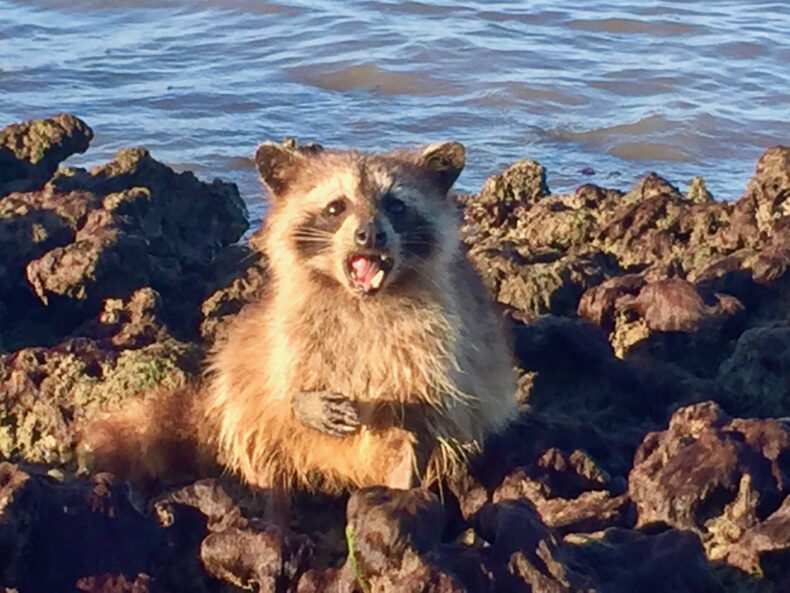
First light on Jewel Key found the tide out and the raccoons hungry. I followed one along the exposed tidal flat that rimmed the south edge of this Everglades islet, Chokoloskee Bay at our backs, the glittering expanse of the Gulf of Mexico before us. The raccoon, or her ancestors, had come here under her own power, paddling the straits between mangrove islands; on past South Florida kayaking trips we’d actually seen the mammals swimming, bedraggled heads bobbing like coconuts in the chop. She scuttled over rocks and stranded kelp, ignoring the human shadowing her not ten feet away. Shortly she stopped, jammed one of her nimble paws into a crevice, and began to rummage in the crack’s invisible depths. She gazed at the sky in concentration, the universal look of an intelligent, dexterous creature trying to grasp an object she can’t quite see — the same look I wear whenever I try to fish my dropped cell phone out from beneath the driver’s seat. After a minute or two her paw emerged, gripping some kind of fleshy invertebrate, a shrimp maybe, or a small octopus. She lifted it to her mouth and tore in with the gleaming daggers of her teeth, lips audibly smacking.
Watching her feast called to mind the Kelp Highway hypothesis, the notion that humans first dispersed through the Americas by following the Pacific coastline and snacking on clams, mussels, snails, crabs, and other bounty along the way. I don’t know how many of the Everglades’ mangrove islands are inhabited by raccoons, but it was easy to imagine them likewise colonizing the archipelago by hopping from land mass to land mass, sustaining themselves on the spineless creatures they pried from tide pools and rock shelves. To be a smart, resourceful mammal is to forage in the littoral zone, whether you’re a primate or a procyonid.